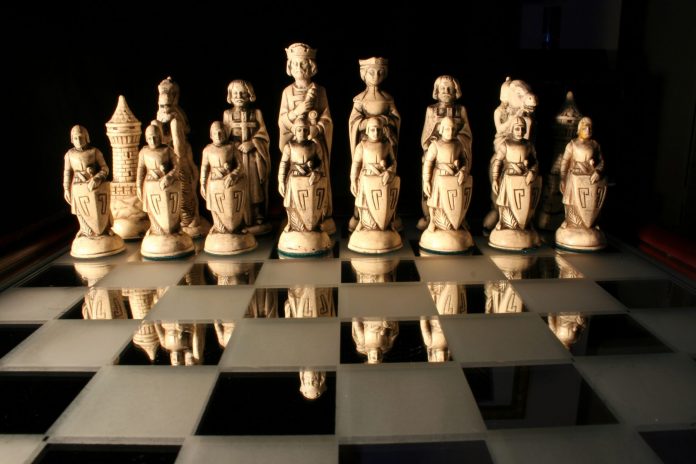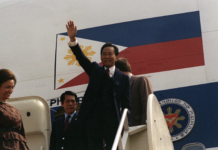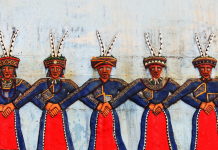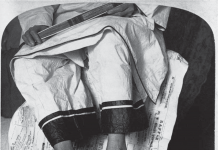
Sowing the seeds of modern warfare
Text Sophie Ibbotson
You have heard of Alexander the Great and Hannibal, but it’s likely that the greatest general and military strategist of all has passed you by. He led the largest and most devastating horse-borne force ever seen, and conquered territories stretching from Hungary and Syria in the West, to Vladivostok and the Sea of Japan in the East. He pioneered siege engines and battlefield explosives, and devised new longbow designs. He laid the groundwork for modern warfare, from the Blitzkrieg strategy of the Nazis, to the use of chemical weapons and improvised explosive devices (IEDs). His name was Subotai the Valiant, and whilst Genghis Khan gained credit for the achievements of the Mongol Horde, it was Subotai who was the brains of the outfit.

Subotai was born near Lake Baikal, Siberia in 1175. As a child, his brother, Jelme, was pledged into the service of the Borjigin, the clan of Genghis Khan. He worked his way up to become a valued advisor, and when Subotai came of age and decided to turn his back on the family business of blacksmithing, it was Jelme who introduced him at court.
Jelme and Subotai were outsiders: Not only were they not Borjigin, they were not even Mongols. They weren’t nomads, and they couldn’t even ride. But Jelme’s personal relationship with Genghis stood the brothers in good stead, and young Subotai was allowed to stand guard at the entrance to Genghis’ tent, listening in to every conversation. As a result, he learned everything there was to know about Mongol military tactics: what had worked, and what had failed.
The Borjigin were just one of a large number of clans roaming the Mongolian steppe. Genghis Khan – the Great Khan – had yet to earn that moniker. The clans were constantly warring: They fought to control the best pastures, and possess the best horses, and blood feuds were rife. These small-scale conflicts gave young men like Subotai the chance to prove themselves.
The rise of Genghis was not smooth, and in 1203, he and his followers – including Subotai – were almost wiped out. Genghis’ former allies combined their forces into one vast army, killing 17,000 of his 20,000 troops. When a Mongol leader was defeated, it was tradition for his followers to pledge their allegiance to the winner. But, for some reason, Genghis’ surviving troops did not defect. In exchange for their support, he agreed to share the spoils of war.
Genghis’ forces were a fraction of their former size, and crippled by low morale. Their previous strategies had failed; Genghis needed fresh ideas. Thanks to his father’s blacksmithing, and his years spent listening at the door, Subotai had devised a number of military innovations, and Genghis allowed him to test them out. Subotai oversaw the manufacturing of weaponry in the camps, the training of troops, and their deployment on the battlefield.
Working together, with Genghis as the clan leader and Subotai as his general, they were able to subdue and unite all the Mongol clans into a single fighting force. They then turned their attentions to China, before making their way along the Silk Road, where the principle cities of the period – and therefore the richest targets to plunder – were located.
The Mongols’ principle weapon was the bow and arrow, but until that point, the technology was primitive. Materials were poor and workmanship was inconsistent. Subotai recognised these shortcomings, identified the best designs and materials, and started to standardise production.
Subotai’s bow of choice was the recurve composite bow, which was far better suited to horsemen than a longbow. He specified that bows be made of bamboo stiffened with horn, with animal sinews on the outside. This combination of materials made the bow more powerful, quadrupling the archers’ firing range to a remarkable 400 metres. Bows of this design were still in use in Mongolia in the 1940s.
The short bow made it possible for horsemen to fire their arrows whilst riding. The problem remained, however, that when they galloped, vibrations from the thudding hooves caused havoc with their aim. Subotai realised that there’s a brief period when all four hooves are suspended off the ground when the vibrations stop, so he trained his archers to fire at that exact moment, circumventing the issue.
Subotai was also responsible for the development and adoption of siege engines. Amongst conquered forces, Subotai identified Chinese siege specialists and Persian engineers. Instead of killing them, he absorbed them into the Mongol Army. He took their existing designs for siege engines and field artillery, including catapults and giant crossbows, and strengthened their wooden construction with the addition of metal struts and brackets.
Subotai took great interest in ballistics, too. He tested shooting Chinese-made fireworks into oncoming troops to trigger mass panic. Although the Chinese were already using gunpowder and flamethrowers in their army, these were handheld devices; Subotai’s were larger and had greater range. He also had his men fill clay pots with naptha (a volatile hydrocarbon akin to lighter fluid) and pieces of shrapnel, and made use of duyao yanqiu – “the ball of smoke and poison” – combination of sulphur, potassium nitrate, aconite, and oil.

Thanks to their nomadic heritage, the Mongols were used to being on the move, and as they had no lands to farm, or provinces to administer, they could remain on campaign year-round. Subotai had at his command a professional army. He could develop tactics, teach them to his men, test them in battle, and improve them.
Subotai also pioneered the use of a feint retreat. He’d send a small cavalry force into battle, firing arrows into the opposition’s frontline. This wasn’t intended to annihilate them, but to draw troops out. Communicating silently with a rudimentary form of semaphore – which appeared like black magic – Subotai would signal to stop firing and retreat. Thinking this was their opportunity to strike, the enemy would be drawn out onto open ground (which horsemen can cross far faster than foot soldiers). It was easy to separate them from each other and from their supply chain. The Mongol cavalry would ride in from either side, and the enemy would be trapped. It was like shooting fish in a barrel.
If this approach sounds familiar, it’s because it was revived, with similarly devastating effects, in the 20th century. Breaking through frontline defences, and disrupting communications and supply lines such that the offensive can be sustained over a protracted period, is known as deep battle. It was used by the Red Army and then the Soviets, then shared with the German Army, resulting in the Nazi’s Blitzkrieg doctrine.
Subotai led the Mongol forces in 65 major battles across 23 countries. He took a small, disillusioned band of nomads, and over the course of 30 years, fought and won against the forces of the Jin Dynasty in China, the Kara-Kitan Khanate and Khwarezmian Empire in Central Asia, and the Kievan-Rus federation of tribes in Eastern Europe. He defeated the Knights Templar on the banks of the Sajo River and even advanced through Bohemia into the heart of the Holy Roman Empire. It is Subotai we must thank – or blame – for the birth of modern warfare.
For more stories and photos, check out Asian Geographic Issue 122.



![The Road to Independence: Malaya’s Battle Against Communism [1948-1960]](https://asiangeo.com/wp-content/uploads/2021/07/WhatsApp-Image-2021-07-26-at-11.07.56-AM-218x150.jpeg)






